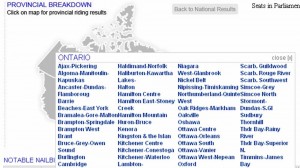Canada Institute for Scientific and Technical Information (CISTI) is
Canada’s national science library and leading scientific publisher, provides Canada’s research and innovation community with tools and services for accelerated discovery, innovation and commercialization.
CISTI delvers science data and information to Canadians online, in the Depository Service and as paper delivery service to researchers in Universities. But its days of doing that are numbered…
CISTI has just suffered very serious budget cuts – 70% cut – that affects scientific innovation, access to scientific data, the dissemination of Canadian Science and open access publishing.
The Government of Canada and the National Research Council of Canada have decided that the journals and services of NRC Research Press will be transferred to the private sector.
Privatization? In a sense they are a victim of their own success. The NRC frames it as follows in a letter to their clients (e.g. Depository Service Program):
this transformation is not the development of a “new business” but the movement of a successful program into a new legal and business environment. It is our belief that this new environment will afford us more flexibility to manage our publishing activities.
More flexibility to reduce services to Canadians more like it since the Depository Services Program (DSP) and the delivery of online access to journals to Canadians cannot be funded by an entity outside of the Federal government, and it is expected that the termination date to journals delivered in this way will be sometime in 2010.
This means less access to scientific journals to Canadians. Research Canadians have paid for! CISTI journals deposited in the DSP were important, since the DSP’s:
primary objective is to ensure that Canadians have ready and equal access to federal government information. The DSP achieves this objective by supplying these materials to a network of more than 790 libraries in Canada and to another 147 institutions around the world holding collections of Canadian government publications.
In addition, hundreds of government jobs – scientists, librarians and researchers are expected to be lost. The budget cut is $35 million in annual expenditures.
This plan includes a reduction in NRC’s a-base funding totalling $16.8 million per year by 2011-2012 (announced in Budget 2009) as well as reductions in revenue-generating activities.
Hmm! Wonder what our current Federal Minister of State for Science and Technology’s thoughts are about science?
Here are a couple of articles:
- NRC cuts could affect 300 positions, The Ottawa Citizen
- Access to CISTI Source to End
Actions:
- Canadian Health Libraries Association – 10 things you can do for CISTI
Here are a few articles:
Action:
- Canadian Health Libraries Association – 10 things you can do for CISTI









Comments on Posts